Hinduism
What are Basic Ethics of Hinduism?
Published
5 years agoon
By
Vedic Tribe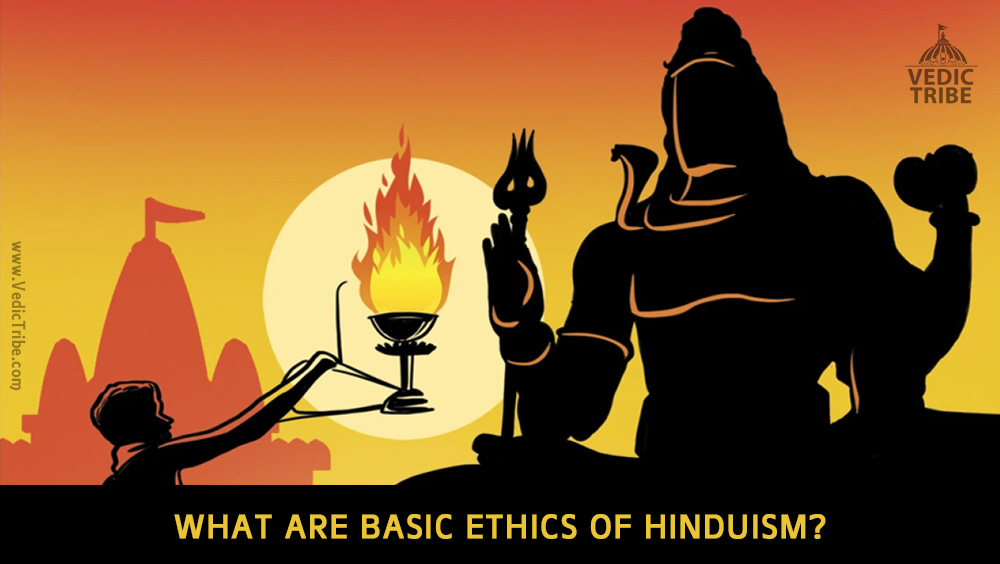
~ By Swami Sivananda
The mark of Dharma is Achara or good conduct. Achara is the mark of the good. From Achara is Dharma born. Dharma enhances life. Man attains prosperity and fame, here and hereafter, through the practice of Dharma. Good conduct is the highest Dharma. It is the root of all Tapas or austerities. Righteousness, truth and good works, power and prosperity—all originate from conduct.
CONDUCT AND CHARACTER
Man wills to obtain his objects of desires. Willing results in action. This is called conduct. Conduct is behaviour. The will that is expressed becomes conduct. Man has various sorts of desires. Sometimes, there is conflict of desires. That desire which obtains victory is termed ‘will’. The inner disposition which makes the will possible is called character. Character is the aggregate of peculiar qualities which constitute personal individuality. External behaviour is not always a sure guide in judging the character of a man.
ETHICS OR THE SCIENCE OF CONDUCT
Morality or ethics is the science of conduct. Ethics is the study of what is right or good in conduct. Ethical science shows the way in which human beings should behave towards one another, as well as towards other creatures. It contains systematised principles on which a man should act.
Ethics is right conduct or Sadachara. We have human morality, family morality, social morality, national morality, professional morality, etc. A doctor has his professional ethics. He should not divulge to others the secrets of his patients. It is his duty to take all precautionary hygienic measures to stop the spread of an epidemic disease and direct his earnest attention towards public health and hygiene. Ethics is a relative science. What is good for one man may not be good for another man. What is good at one time and at one place may not be good at another time and at another place.
Ethics is relative to the man himself and to his surroundings.
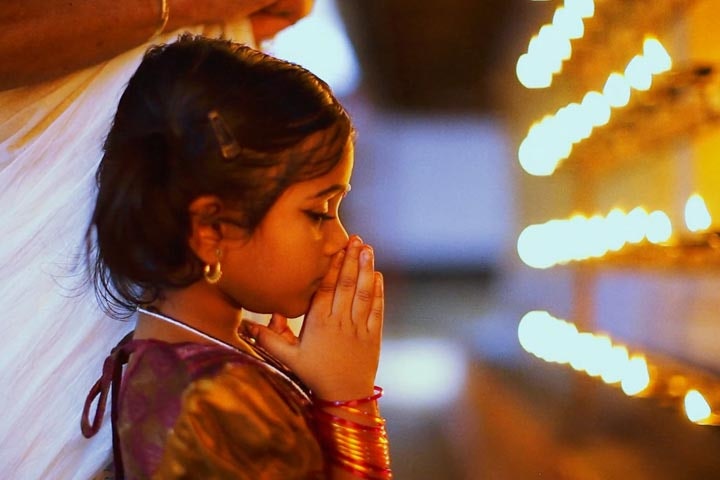
ETHICS, SPIRITUALITY AND RELIGION
Without ethics, you cannot have progress in the spiritual path. Ethics is the foundation of Yoga. Ethics is the corner-stone of Vedanta. Ethics is the strong pillar on which the edifice of Bhakti Yoga rests. Ethics is the gateway to God-realisation. Without ethical perfection, no spiritual progress or realisation is possible. A Yogic student or aspirant must be strictly ethical. He must be truthful and pure in thought, word and deed. He must possess excellent conduct. He must not injure any living being in thought, word and deed. He must practise rigidly right thought, right speech and right action. Every religion has its ethics. The Sermon on the Mount of Jesus and the Ten Commandments contain ethical teachings for the uplift of man. The Noble Eightfold Path of the Buddha is the essence of ethics. The Yamas and Niyamas of Patanjali Maharshi constitute the highest ethics. Manu Smriti, Yajnavalkya Smriti and Parasara Smriti contain the code of conduct for man. The three kinds of austerity of the Gita are nothing but ethics in an intensified form.
BENEFITS OF THE PRACTICE OF ETHICS
Morality is the gateway to religion. He who leads a moral or virtuous life attains freedom, perfection or Moksha. Practice of ethics will help you to live in harmony with your neighbours, friends, your own family members, fellow-beings and other people. It will confer on you lasting happiness and
Moksha. It will purify your heart. It will keep your conscience ever clean.Amoral man who follows strictly the principles of ethics will not deviate even a fraction of an inch from the path of Dharma or righteousness. Yudhishthira had earned an undying reputation for his practice of ethics. He was an embodiment of Dharma. Hence he still lives in our hearts. Good conduct is the root of material and spiritual prosperity. Conduct increases fame. It is good conduct which prolongs life and destroys all calamities and evils and brings eternal happiness. It is good conduct that begets virtue. Therefore develop good conduct.
ETHICAL CODES IN HINDUISM
Hindu ethics is superb. Hinduism lays great emphasis on ethical discipline. Yama (self-restraint) and Niyama (religious observances or canons) are the foundations of Yoga and Vedanta. Undeveloped persons cannot think for themselves. Hence rules of conduct have been laid down by great sages or seers like Manu and Sage Yajnavalkya. Lord Krishna says in the Gita: “Let the scriptures be thy authority in determining what ought to be done or what ought not to be done. Knowing what hath been declared by the ordinances of the scriptures, thou oughtest to work in this world” (Ch. XVI-24). The Smritis written by Yajnavalkya, Manu and other sages distinctly prescribe the rules of conduct. As you have not got the power nor the time to think of the moral principles and rules given in the scriptures, you can get them from the sages and saints and follow them to the very letter.

THE FOUNDATIONAL PRINCIPLES OF HINDU ETHICS
The ethics of the Hindus is subtle, sublime and profound. All religions have taught ethical precepts such as: “Do not kill, do not injure others, love your neighbour as your self,” but they have not given the reason. The basis of Hindu ethics is this: “There is one all-pervading Atman. It is the innermost soul of all beings. This is the common, pure consciousness. If you injure your neighbour, you really injure yourself. If you injure any other creature, you really injure yourself, because the whole world is nothing but your own Self.” This is Hindu ethics. This is the basic metaphysical
truth that underlies all Hindu ethical codes. The Atman or Self is one. One life vibrates in all beings. Life is common in animals, birds and human beings. Existence is common. This is the emphatic declaration of the Upanishads or Srutis. This primary truth of religion is the foundation of ethics or morality or science of right conduct. Morality has Vedanta as its basis. The first thing you learn from religion is the unity of all selves. The Upanishads says: “The neighbour is, in truth, the very Self and what separates you from him is mere illusion.” One Atman or Self abides in all beings. Universal love is the expression of the unity. Universal brotherhood has its basis in the unity of Self. All human relations exist because of this unity. Yajnavalkya said to his wife Maitreyi: “Behold, my dear, not indeed for the love of the husband is the husband dear, for the love of the Self is the husband dear.” And so with wife, sons, property, friends, worlds and even the Devas themselves. All are dear, because the one Self is in all. If you injure another man, you injure yourself. If you help another person, you help yourself. There is one life, one common consciousness in all beings. This is the foundation of right conduct. This is the foundation of ethics.
SERVICE AS WORSHIP
A philanthropist donates big sums to social institutions. He regards this as some kind of social service only. That is all. He has not got the Bhava or mental attitude, that the whole world is a manifestation of the Lord and that he is serving the Lord. He has not got the Bhava that the Lord is
working through his instruments or senses, that every act is an offering unto the Lord, and that every deed is a Yogic activity. In India, dinner is prepared for five hundred persons even when two hundred persons are invited. Feeding is worship of Narayana or the Lord, for a Hindu. It is Atithi-Yajna or sacred sacrifice. A Hindu regards every creature as the Lord. The Hindus are very generous, noble, large-hearted, charitable, God-fearing, sympathetic, merciful and hospitable. If they see a hungry man in the street, they will take him to their house, treat him as Atithi-Narayana (God in the form of guest), feed him first and then take their food. Nowhere in the world you will hear of such a treatment. You cannot get even a morsel of food free in other countries. A Hindu believes that if he feeds a single sage or a Mahatma, he is feeding the whole world, because he has realised that a realised sage is identical with the whole Virat or Brahman and is one with all beings of the entire universe. Hindu ethics is based on the sublime philosophy of Vedanta which propounds the doctrine of oneness of life and unity of consciousness. Ethics or morality and doing good to others, is the manifestation of this oneness. A Hindu distributes food to the crows, dogs, cows and fish first before he takes his food. He tries to recognise the one Atman that is hidden in all these forms. He endeavours to become one with the Universal Being. He knows that in loving others he loves himself and in injuring others he injures himself. Through the practice of cosmic love he feels that all bodies are his, all hands are his, all feet are his and that the whole world is his home(Vasudhaiva Kutumbakam). Gradually he becomes one with the soul of the universe and one with the Oversoul also. Hindu ethics leads eventually to Self-realisation. Ethics is a means to Yoga.
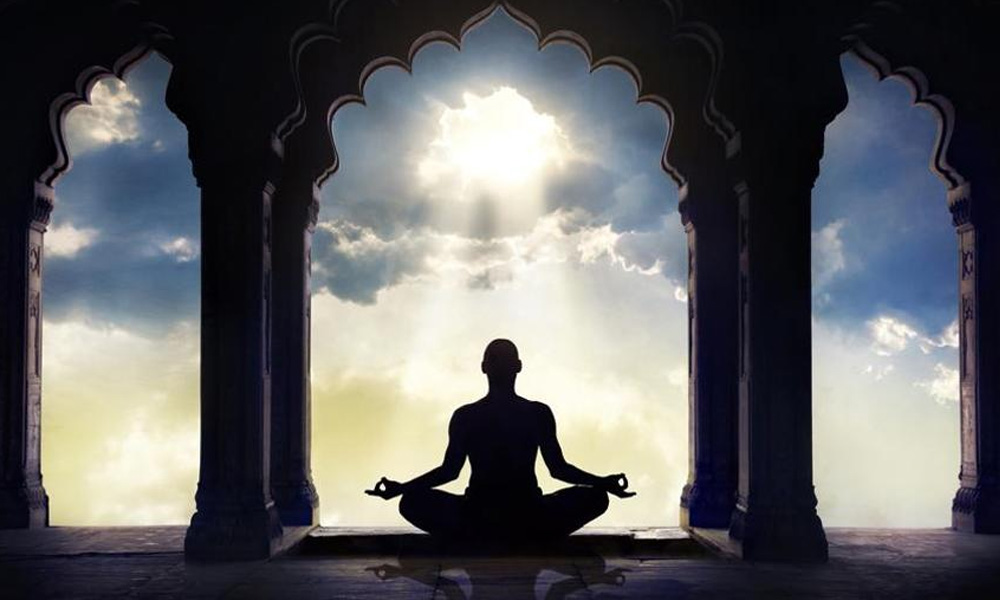
ETHICAL CULTURE OR THE PROCESS OF PURIFICATION
The very root and core of all moral discipline is mental purification through refraining from all evil action and the active practice of virtue. Do good at all times. Ahimsa, Satya and Brahmacharya symbolise the three processes of avoiding sin, sticking to virtue and Self-purification.
All harm arises out of man’s egoism. The ego manifests itself as ambition, desire and lust. Under their influence man indulges in hatred, love, flattery, pride, unscrupulousness, hypocrisy and delusion. To eradicate egoism arising out of Deha-Abhimana (body-idea), think constantly on the
foulness and perishability of the body and the pains arising out of the senses. Reject them as evil and mentally rise above them. Dwell upon that which is desirable, elevating and divine. Improper action—thoughtless action without discrimination—gives rise to all misery. To get freedom from misery, the noble path of virtue—Sadachara—is to be followed. Rigidly observe truth and purity in your thoughts, speech, actions, inner motive and general conduct. Be loving, tolerant and charitable in your opinion of men and things and in your dealings with others. In every sphere, the individual should strive to adhere to these qualities and to manifest them. Thus, this ideal is to be practised between parents and children, elders and youngsters, teacher and pupil, friend and friend, Guru and disciple, leader and follower, subject and ruler, and nation and nation.
You must proceed along the path of virtue. Be determined never to swerve even an inchfrom Dharma. The mind has to be carefully trained and the will should be developed and strengthened. Therefore much importance has been laid by the ancients upon Yama, Niyama and Shat-Sampat (six treasures of virtue). The mind and will must be exercised and disciplined through deliberate acts of self-denial and self-sacrifice in everyday life. Ethical culture, therefore, demands moral vigilance and right exertion. The development of a sensitive conscience and positive admiration for goodness and nobility plays a great part in ethical culture.
PHILOSOPHY OF RIGHT AND WRONG
Everybody speaks: “This is right, that is wrong; you are right, he is wrong;” but he cannot tell you exactly what he means by ‘right’ and ‘wrong’. What is the criterion by which we judge an action to be right or wrong, and good or bad? “Right and wrong” and “good and bad” are relative terms. Right and wrong refer to the moral standard, as law. Good and bad refer to it, as end. You will have to adjust your conduct according to this moral standard. That which is in accordance with a rule is right. That which is worthy of achievement is good. Religion gives us the ultimate data upon which ethical science may be built.
RELATIVE NATURE OF RIGHT AND WRONG
Right and wrong—Dharma and Adharma—are relative terms. It is very difficult to define these terms precisely. Even sages are bewildered sometimes in finding out what is right and what is wrong in some special circumstances. That is the reason why Lord Krishna says in the Gita: “What is action? What is inaction? Even the wise are herein perplexed. Therefore I will declare to thee the action by knowing which thou shalt be liberated from evil. It is needful to discriminate action, to discriminate unlawful action, and to discriminate inaction; mysterious is the path of action. He who
seeth inaction in action and action in inaction, he is wise among men; he is harmonious, even while performing all actions” (Ch. IV-16, 17, 18).
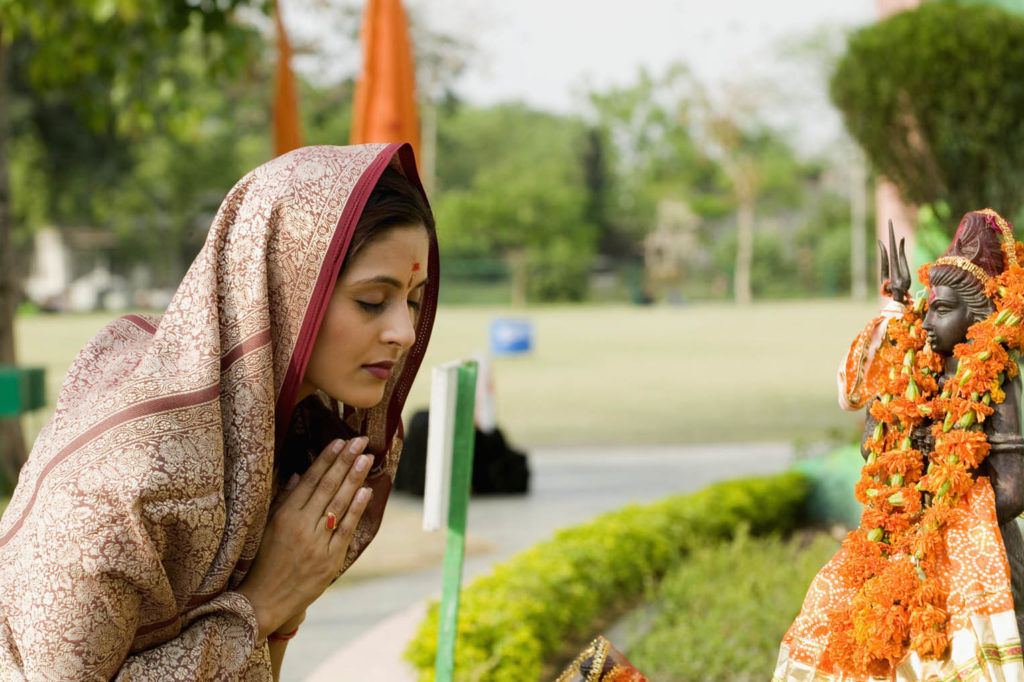
ILLUSTRATIONS OF RIGHT AND WRONG
Right and wrong are always relative to the surrounding circumstances. What is right in one situation is not right in another. Right and wrong vary according to time, special circumstances, Varna (status or class in society) and Asrama (order or stage of life). Morality is a changing and relative term. That passionate man who molests his legally married wife frequently to gratify his passion is more immoral than aman who visits the house of his sister of ill-fame once in six months. That manwho dwells constantly on immoral thoughts is the most immoral man. Do you clearly note the subtle difference now? To kill an enemy is right for a Kshatriya king. A Brahmin or Sannyasin should not kill anybody even for protecting himself during times of danger. They should practice strict forbearance and forgiveness. To speak an untruth to save the life of a Mahatma or one’s Guru,
who has been unjustly charged by the unjust officer of a state, is right. Untruth has become a truth in this particular case. To speak a truth which brings harm to many is untruth only. To kill a dacoit who murders the wayfarers daily is Ahimsa only. Himsa becomes Ahimsa under certain circumstances. Forgiveness or Kshama befits an ascetic or Sannyasin who leads the life of Nivritti Marga or renunciation. It cannot befit a ruler. The ruler may forgive one who has injured him, but he cannot forgive one who has done the greatest harm to the public.
There are special Dharmas during critical, dangerous circumstances. They are called Apad-Dharma. Rishi Visvamitra took forbidden meat from a Chandala or outcaste when there was a severe famine, and offered this in his sacrifice to the Devas. Ushasti, a learned sage, took the polluted beans from the hands of an elephant-driver when the former was suffering from acute hunger and when he was not able to get food from anyone else.
INDICATORS OF RIGHT AND WRONG
Rishi Kanada, author of the Vaiseshika system of philosophy, says in the opening Sutra: “That which elevates you and brings you nearer to God, is right. That which brings you down and takes you away from God, is wrong. That which is done in strict accordance with the injunctions of
the scriptures is right and that which is done against their injunctions is wrong.” This is one way of defining the terms ‘right’ and ‘wrong’. To work in accordance With the Divine Will is right and to work in opposition to the Divine Will is wrong. It is very difficult for the man in the street to find out what exactly the Divine Will is, in certain actions. That is the reason why wise sages declare that people should resort to Sastras, learned Pundits and realised persons, for consultation. A pure man who has done Nishkama Karma-Yoga for several years and who is doing worship of Isvara for a long time, can readily find out the Divine Will when he wants to do certain actions. He can hear the inner, shrill, silent voice. Ordinarily people should not attempt to hear this Divine Voice, the Voice of the Silence. They may mistake the voice of the impure mind for the Voice of God. The lower instinctive mind will delude them. Selfishness clouds understanding. Therefore, if aman has got even a tinge of selfishness, he cannot detect what is right and wrong. A very pure, subtle and sharp intellect is needed for this purpose. The Bhagavad-Gita describes the nature of Sattvic reason, Rajasic reason and Tamasic reason as follows:
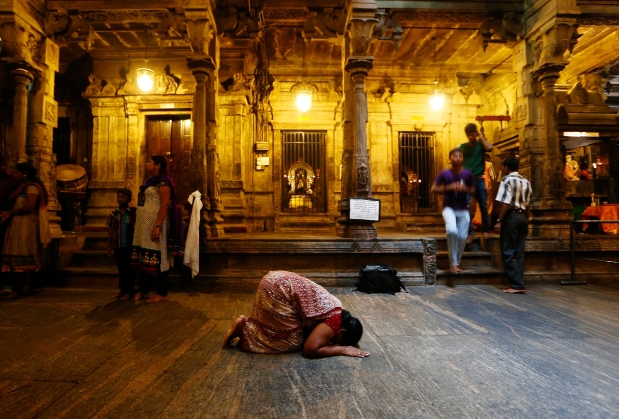
“That which knoweth energy and abstinence, what ought to be done and what ought not to be done, fear and fearlessness, bondage and liberation, that reason is pure, O Partha. That by which one wrongly understandeth right and wrong, and also what ought to be done and what ought not to be done, that reason, O Partha, is passionate. That which is enwrapped in darkness, thinketh wrong to be right and seeth all things subverted, that reason, O Partha, is of darkness” (Ch. XVIII-30, 31, 32). Various other definitions are given by wise men to help the students in the path of righteousness. In the Bible it is said: “Do unto others as you would be done by.” This is a very good maxim. The whole gist of Sadachara or right conduct is here. If one practises this very carefully, he will not commit any wrong act. Do not do to another what is not good for yourself. Do not do any act which does not bring good to another or which injures another and makes you feel ashamed for it. Do that act which brings good to others and which is praiseworthy. Do as you would be done by. Do unto others as you wish others should do unto you. This is the secret of Dharma. This is the secret essence of Karma Yoga. This is a brief description of what right conduct is. This will lead you to the attainment of eternal bliss. “Ahimsa Paramo Dharmah—non-injuring in thought, word and deed is the highest of all virtues.”
If one is well established in Ahimsa in thought, word and deed, he can never do any wrong action. That is the reason why Patanjali Maharshi has given Ahimsa great prominence in his Raja Yoga philosophy. Ahimsa comes first in the practice of Yama or self-restraint. To give happiness to others is right; to spread misery and pain to others is wrong. One can follow this in his daily conduct towards others and can evolve in his spiritual path. Do not perform any act that brings to you shame and fear. You will be quite safe if you follow this rule. Stick to any rule that appeals to your reason and conscience and follow it with faith and attention. You will evolve and reach the abode of eternal happiness. That work which gives elevation, joy and peace to the mind is right and that which brings depression, pain and restlessness to the mind is wrong. This is an easy way to find out right and wrong. That which helps you in your spiritual evolution is right and that which obstructs and hinders your spiritual evolution is wrong. That which leads to unity of self is right and that which leads to separation is wrong. That which is in accordance with the injunctions of the holy scriptures is right and that which is not in accordance with the sacred lore is wrong.
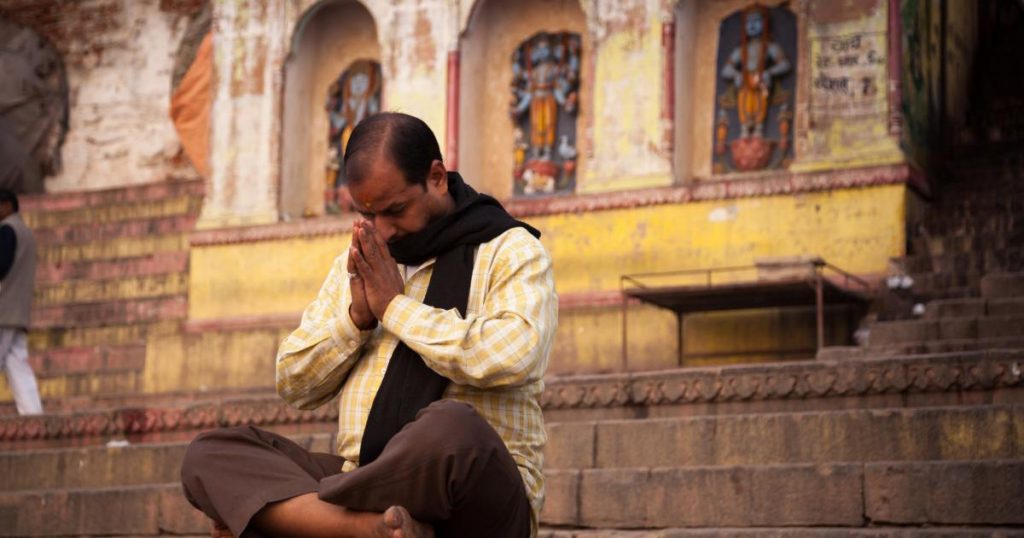
To work in accordance with the Divine Will is right and to work in disharmony with the Divine Will is wrong. To do good to others, to serve and help others, to give joy to others, is right and to give pain to others, to injure others is wrong. All that which is free from any motive of injury to any being is surely morality. Moral precepts have been made to free creatures from all injuries. Why is charity right? Because it is in conformity with the law: “Do charity.” Why is stealing wrong? Because it is against the law: “Thou shalt not steal.” Why is it good to help a man when he is in trouble and difficulties? Because it will refine and ennoble your character. It will instil mercy in your heart. The cultivation of virtues will help you to realise the Supreme Self. Why is it bad to kill any being? The end is unworthy. It will corrupt your character. It will reduce you to the level of a brute.
YOGIC GARDENING
By doing wrong actions, you taint your character. By doing virtuous actions, you develop a noble character. Without character, man falls down to the level of a brute. A man of character is honoured, trusted and adored everywhere. Therefore, develop a good character when you are young. Learn how to eradicate vices and how to cultivate virtues in the garden of your heart. Vices and evil habits are the weeds. Virtues are priceless fruits and flowers. Learn the Yogic method of Pratipaksha Bhavana or cultivation of the opposites. Purity or celibacy, forgiveness, generosity, humility and selflessness are the opposites of lust, anger, greed, pride and selfishness. Become a skilful Yogic gardener. Plant good flowers in the garden of your heart and enthrone the Lord in the centre of the heart-garden and meditate on Him. You will enjoy eternal bliss and immortality.
CONCLUSION
You must obey the laws or rules of conduct. The rules are given for you by the law-givers for your own betterment and spiritual uplift. The law-givers are great sages who had direct God-realisation.
To stick to Sadachara is difficult, no doubt. Mockery, misunderstanding and persecution will have to be faced. Therefore, the cultivation of forbearance, meekness of spirit, calm endurance and spirit of forgiveness are of great importance. Uphold virtue at any cost. For its sake, bear any calumny. Return good for evil. Do not leave the path of morality even if your life is in danger. Do not leave righteousness for the sake of some material gain. Consult the Sastras and Mahatmas whenever you are in doubt. Build up your character. Grow. Evolve. Keep up your ideal always before your mind. Stick to Sadachara or right conduct. Practise it. You will soon attain eternal bliss and immortality.
You may like
Hinduism
Significance of Bilva Leaf – Why is it dear to Lord shiva?
Published
5 years agoon
March 12, 2021By
Vedic Tribe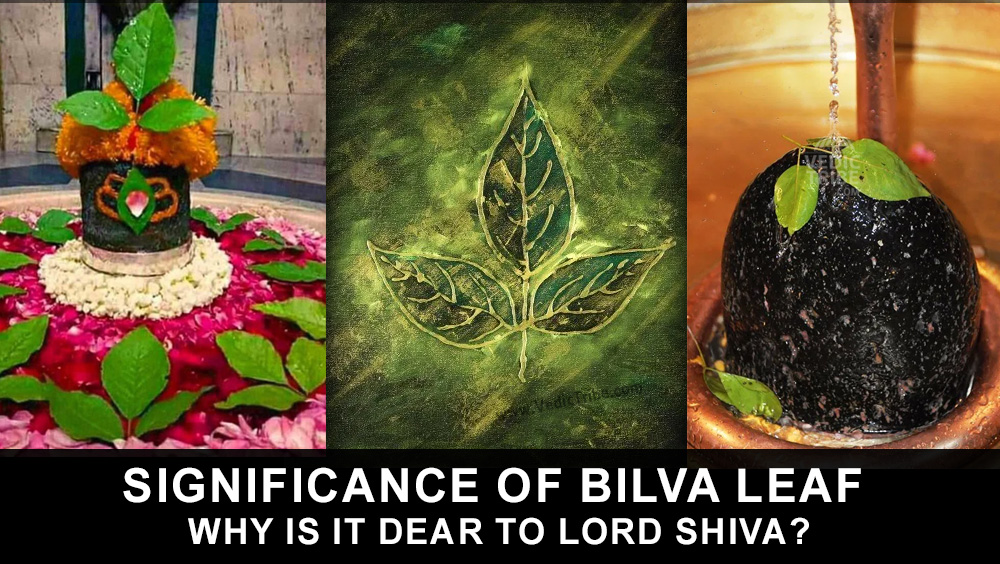
– Arun Gopinath
Hindus believe that the knowledge of medicinal plants is older than history itself, that it was gifted hundreds of thousands of years ago to the Vedic by Lord Brahma, the divine creator.
Thus when the Rishis of the Ayurveda sought to heal human suffering, they were able to draw on knowledge that had already been evolving for millennia in the forests of India. One tree about which they had a very deep knowledge was the Bilva tree. The science of Ayurveda values the Bilva highly for the medicinal properties contained in its root, fruit and leaves. According to Swami Sivananda, it is a healing tree which cures all diseases caused by vata (wind) and gives strength to the body.
More commonly known as the Bel Tree in India as well as other warm countries, this is a sacred tree having sacrificial importance and the first thing we can notice about the leaves is that they are generally trifoliate. This trifoliate leaf is symbolic of Trikaal or the Hindu Trinity of Devas known as Brahma Vishnu and Mahesh. The other names of this tree are Wood apple and its botanical name is Aegle marmilos.
The Bilva leaf or Patra as it is known, represents the Trinetra or three eyes of Lord Shiva, the main aspects like Trishakti (volition, action and knowledge), the three Shiva lingams and the three syllables of AUM or Omkar and are most favorite of Lord Shiva.
There are also five formed Bilva leaves known as PanchaDal patra found on some Bilva trees and these too are held as sacred for the worship of Lord Shiva. Bilva tree grows to a height of 8 meters with thorns. The leaves are alternate, ovate, trifoliate and aromatic. The tender leaves and shoots are consumed as salad greens. The flowers bloom in the month of May and will have a sweet fragrance.
It appears from all the Hindu texts and scriptures that the Bilva tree itself has been held very sacred and auspicious and is considered very holy since time immemorial thats its significance is mentioned in Mahapuranas in various forms of mantras. The Shiva Purana mentions a particular narration of how the usage of Bilva due to its scientific as well as medicinal properties is of great adavantage to Mankind.
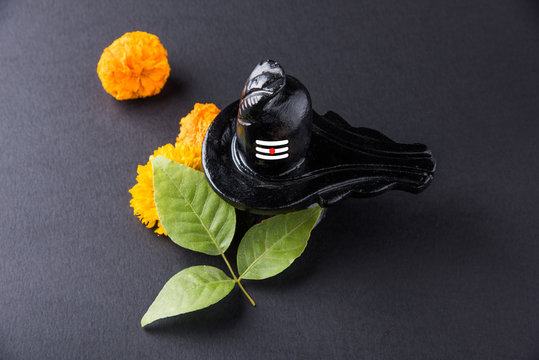
The 22nd Chapter of maha ShivaPurana narrates ” The trifoliate Bilva Patra is so sacred to Lord Shiva & is therefore a symbol of the Lord. Adored by all the Gods, its importance is difficult for anyone to comprehend. The sacred tree can only be known to a limited extent. Sacred sites of this Earth can only find their place at the root of this auspicious tree. Those who meditate upon Lord Mahadeva in His form of linga at the root of Bilva obtain Moksha & become purified souls by attaining Shiva. Such are the marvels of this sacred Bilva.”
The famous Shri Bilvashtakam (v. 6–7) Mentions :
Lakshmyaascha stana utpannam Mahaadeva sadaa priyam,
Bilva vriksham prayachchhaami eka bilvam Shivaarpanam.
Darshanam bilva vrikshasya sparshanam paapanaashanam,
Aghorapaapasamhaaram eka bilvam shivarpanam.
Translation :
Born from the heart of Goddess Lakshmi, the Bilva tree is ever dear to Mahadeva. So I ask this tree to offer one Bilva leaf to Lord Shiva. Even if (one) has darshan ( view) of the Bilva tree, and touches it, surely frees one from sin. The most terrible karma is destroyed when a Bilva leaf is offered to Lord Shiva.
It is also believed that Lakshmi, the Goddess of Wealth, also lives in the bel tree. Those who perform the puja of Shiva and Parvati devoutly, using the leaves, will be endowed with spiritual powers.
Scientific Advantages
According to Hindu scriptures, the Bilva is Triguna which is connected to the three Gunas or components of natural characteristics of the tree. In Hindu philosophy, the three Gunas are Sattva, Rajas & Tamas with Sattva being the pure most while Tamas normally is to do with darkness & ignorance.
The Sattvic component is believed to be more centered within the bilva patra and therefore the high capacity to absorb and emit Sattvic frequencies. This has various effects on the environment as well as on anyone merelt touching the leaf. One of them is the reduction of Rajasic-Tamasic atoms present in the atmosphere & more importantly within the human body.
A Sattvic leaf like bilva patra when brought in proximity of a person suffering from negative energies such as distress and anxiety is believed to medically reduce these energies within the human body. People with negative outlook towards life and their environment normally do not realize they have negative energies building up within their body and are at a risk of subconsciously harpering destructive thoughts also.
Whenever such people come into contact with a Sattvic atmosphere, what they fail to realize is their negative energies try to fight the positivity of a Sattva predominant environment. This struggle can build up at various levels and can vary from the human mind thinking negatively and can result sudden bursts of anger to destruction of things around them.
Medicinal uses
The roots, skin, fruits and the leaves of the Bilva tree are used for medicinal purpose. Bilva has astringent, edema lessening, anti-diarrhea, laxative and appetizer properties hence, can be used to cure both internal and external diseases.
The sacred tree has many medicinal usages and is advantageous in curing many human ailments such as :
- Bleeding gums.
- Bel fruit clears diarrhea, dysentry, phlegm, high blood pressure, morning sickness in pregnancy, stress.
- Asthma can be controlled when a mixture of dry bel leaf powder & honey is consumed daily
- Jaundice can be cured by consuming the extracted juice of the bilva leaves
- Anemia can be cured by drinking the powder of the bel fruit mixed with milk
- Bel fruit keeps the skin rejuvenated when pasted into a face pack; also cures joint aches
Hinduism
Concept of Time and Creation (‘Brahma Srishti’) in Padma Purana
Published
5 years agoon
March 12, 2021By
Vedic Tribe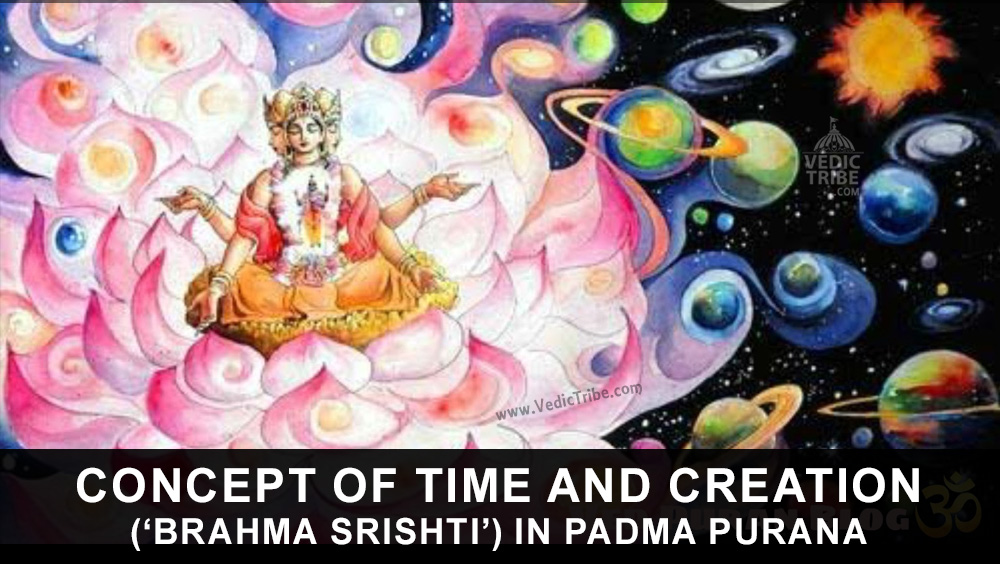
Pulastya Maha Muni affirmed to Bhishma that Brahma was Narayana Himself and that in reality he was Eternal. But in a formal sense it was stated that Brahma was ‘created’ and in that normally recognised manner Brahma had hundred years of age; apparently, the concept of Time would have to have a basis and that was why Brahma’s age was determined notionally as of hundred Brahma Years; in other words, ‘Para’or the first half was over and his present age has entered the ‘Paraartha’, the second half (viz. Fifty first year).This was how, the concept of Time emerged.
Every fifteen ‘Nimeshas’ constitute one ‘Kaashtha’; thirty Kashthas one one ‘Kala’; thirty Kalas make one ‘Muhurtha’; thirty Muhurtas make one day/night, thirty day/nights make on ‘Maasa’; (half Maasa makes one ‘Paksha’), six Maasas make one ‘Ayana’ and two Ayanas-Dakshinayana and Uttarayana- make one ‘Year’. Dakshinayana is a night for Devas and Uttarayana their day. One hundred human years make one day-night of Devas.
Twelve thousand Deva Years make four Yugas viz, Satya Yuga, Treta Yuja, Dwapara Yuga and Kali Yuga and these four Yugas make one Maha Yuga which is Brahma’s one day! Satya Yuga comprises 4800 DevaYears including ‘Sandhya mana’ of 400 years and ‘Sandhyamsha maana of additional 400 years; Treta Yuga comprises 3600 Deva Years including 600 years of ‘Sandhya/ Sandhyamsha mana’each; Dwapara Yuga of 2400 years including 200 years of ‘Sandhya/ Sandhyamsha mana’each and Kali Yuga of 1000 years including 100 years each of Sandhya / Sandhyamsha manas.Deva Years are 360 times more than human years. For instance, the duration of Kali Yuga in human year terms is 432,000 years; Dwapara’s is 864000; Treta Yuga’s is12, 96,000 and of Satya Yuga is 17, 28,000 years; all the Yugas totalling 432, 00, 00,000 (432 million) make one Chaturyuga and that constitutes one Brahma Day!
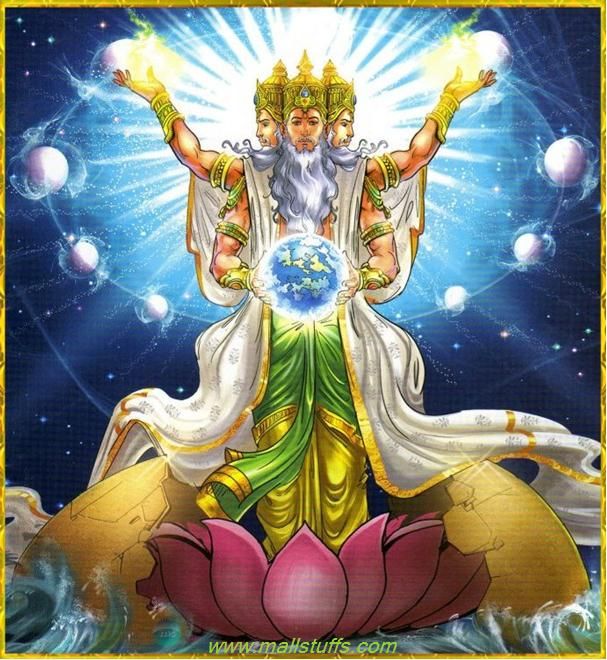
In one day of Brahma there are fourteen Manvantaras and each Manvantara has 8, 51,000 of Deva Years. There are two kalpas on one day-night of Brahma.At the end of the previous Kalpa, Brahma felt fresh from the previous night and found that Prithvi was submerged in water while Bhagavan Varaha Deva entered into water and Prithvi prayed to him; in response, Varahadeva emanated a ‘Ghur Ghur’ sound which was like the reverberation of Sama Veda, lifted up Prithvi from Rasala loka by the might of his horns, Devas rained fragrant flowers from the sky, Rishis went into rapturous tributes to Vishnu’s incarnated Varaha Rupa; and Brahma implored the latter to allow him recommence Srishti with his blessings as also to preserve and administer the Creation that he would so generate even as the Lord gracefully replied to say: ‘Tathastu!’ (So be it!).
Brahma’s first Srishti being Maha Tatva, the creation of Tanmatras was known as Bhuta Sarga or the Second Srishti; Vaikarika or Satvika Ahankara was the third Srishti of Indriyas or Aindriya Sarga; the Fourth Srishti is the Mukyha Sarga related to Mountains, Forests and other Sthaavara Srishti; the fifth Srishti relates to Pashu-Pakshi (Animals and Birds); the seventh Srishti was called Deva sarga or Urthva faced and was of Devas; and Seventh Srishti was of Manava Sarga; the Eighth was of Anugraha Sarga which could be of Satvika or Tamasic nature and finally the Ninth Srishti called the Kaumara Sarga which could be of Prakrita or Vaikrita Marg.
Depending on the carry forward of one’s own balance of ‘Papa-Punya’of the previous time-frame preceding the Pralaya, placement of lives was commenced by Brahma in the New Age. Arising out of his ‘Manasika Samkalpa’ (Mind born Proposal), Brahma created various species including Devas, Asuras, Pitaras and human beings. From his thighs, the evil Asuras emerged and as per his free will various birds were created.
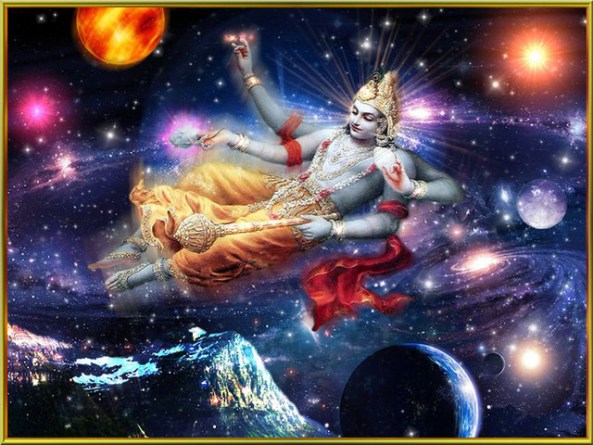
From his stomach surfaced cows, his shoulders the wolves; his face created horses, elephants, asses, nilgais, deer, camels, etc.each species multiplying several others. Brahma’s body hairs created fruits, roots and foodgrains. From his right extreme face, Brahma created, Gayatri Chhandah, Rig Veda, Tivritstoma, Rathantara, Agnihoshtha yagna; from South-faced he created Yajur Veda, Tristhub Chandas, Panchadasha stoma, Brihatsaama, etc; Sama Veda, Jagati Chhanda, Saptadashastoma, ‘Vairupa’ etc; from the Western face; Brahma created Ekavimshatstoma, Atharva Veda, Aptoryama, Anushthup chhanda, and Vairaja from the Uttaravarti Mukha. Miscellaneous ‘Pranis’ were created from any of the limbs of Brahma. To sum up thus at the beginning of the Kalpa, Prajapati Brahma created Devas, Asuras, Pitaras and human beings as also of Yakshas, Pishachas, Gandharvas, Apsaras, Siddhas, Kinnaras, Raakshasaas, Lions, Birds, Animals and Reptiles.
Focussing attention on human beings now, Bhishma asked the highlights of Varnashrama Vidhi and Pulastya Muni explained that Brahma created Brahmanas from the face, Kshatriyas from ‘Vakshasthali’ (chest), Vaishyas from thighs; and Shudras from the feet.These four Varnas are the important constituents of ‘Yagnas’; Devas are satisfied wirh their respective portions of ‘Havis’ (oblations) to Agni and being pleased with the Yagnas, Devas bestow good rains and good crops which leads to material prosperity.
The hearts and hands of every body tend to be clean and social customs and virtuous living would go hand in hand. Prajapati decided the duties of the Four Varnas, depending on the professions that human beings tended to follow like Brahmanas performing Yagnas, Vratas, Temple Tasks, and enabling various religious deeds of Virtue in favour of the members of three other Varnas etc.; Kshatriyas discharging the responsibilities of Kingship, Administration, Security against external enemies, collection of taxes and maintenance of Internal Law and Order; Vaishyas performing business, farming, trading and all matters involving finance, provision of materials to others by allowing reasonable profits for the services given etc. and Shudras supporting the members of the Three Varnas in the discharge of duties being undertaken by them.
Brahma materialised the above various kinds of Creations by applying his mental faculties but was not quite satisfied as the next generations so created were not adequate to fill in the universe; therefore he created Sages like Bhrigu, Pulaha, Kratu, Angira, Marichi, Daksha, Atri and Vasishtha, in addition to the four ‘Manasa Putras’ viz. Sanaka, Sanandana, Sanatana and Sanat Kumaras. As not all these sons were interested in family lives, Brahma created Rudra from his forehead and decided that half of the body be a woman; thus Eleven Rudras got materialised along with as many Rudranis who had a variety of Rupas ranging from ‘Sowmya’ (composure), ‘Krura’(unkindness), ‘Shanta’ (peacefulness), ‘Shyama’ (darkness), ‘Gaura’ (wheatish) and such other colours.
Further on, Brahma created Swayambhu Manu and the latter’s wife Shatarupa; the Manu couple gave birth to sons Priyavrata and Uttanapada and daughters Prasuti (married to Daksha) and Akruti (married to Ruchi Prajapati). To Prasuti and Daksha were born twenty four daughters, thirteen of whom were Shraddha, Lakshmi, Dhruti, Pushti, Tushti, Megha, Kriya, Buddhi, Lajja, Vapu, Shanti, Sidhi, and Kirthi (all these thirteen were married to Dharma); eleven more daughters were Khyati, Sati, Sambhuti, Smriti, Preeti, Kshama, Sannati, Anasuya, Urja, Swaha and Swadha; they were wedded respectively to Bhrigu, Shiva, Marichi, Angira, Pusasthya, Kratu, Atri, Vasishtha, Agni and Pitras.
The sons of Daksha’s daughters were Kamak by Shraddha, Darpa to Lakshmi, Niyam to Dhriti, Santhosh to Tushti, Lobha to Pushti, Shruta to Megha; Danda, Vinay and Naya to Kriya, Bodha to Buddhi, Vinay to Lajja, Vyavasayak to Vapu, Kshema to Shanti, Sukha to Siddhi, and Yash to Kirti.These were all the sons of Dharma. Kaam and Nandi gave birth to Harsha, the grand son of Dharma. Bhrigu and Khyati gave birth to Devi Lakshmi who was Lord Narayana’s wife. Bhagavan Rudra accepted Sati as his wife (Daksha’s daughter) but Devi Sati sacrificed her life pursuant to Daksha’s Yagna to which Rudra was uninvited but Sati insisted in attending it; she felt highly insulted by her father Daksha who also offended Rudra Deva and Rudra eventually destroyed Daksha Yagna. — with Srilan Srisukumaran.
Hinduism
Karma Yoga – Yog Through Selfless Actions
Published
5 years agoon
February 23, 2021By
Vedic Tribe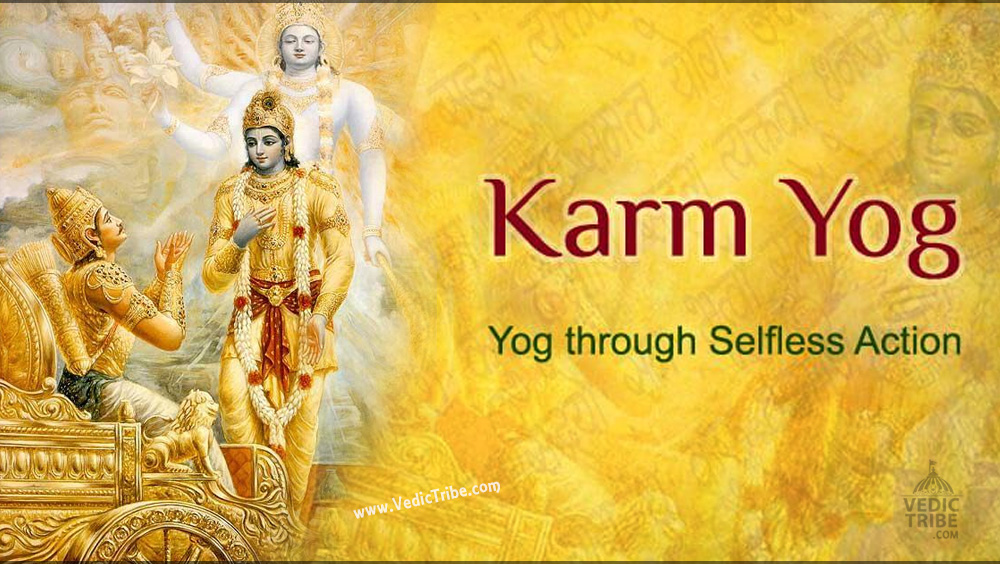
Karma Yoga is Meditation in Action:
“Karma” means action and “yoga” means loving unity of our mind with God. To perform karma and also practice yoga means to remain engaged in activity in the world while remaining in a state of devotional unity with God. This is true spiritual action.
Your bhakti yoga meditation practice will combine all these aspects and it will include:
- Daily sitting meditation
- Daily dynamic meditation woven seamlessly into the fabric of your life’s activities
Before we look at guidelines for these, let’s explore how process is described in the Hindu scriptures.
Karma Yoga of the Bhagavad Gita:
One of the most important scriptures of Hinduism, the Bhagavad Gita, was revealed under unusual circumstances: moments before a war and in the middle of a battlefield. It is comprised of a 700-verse dialogue between Lord Krishna, supreme God, and Arjuna, his loving disciple.
The all-in-one solution of the Bhagavad Gita for eliminating karma is Lord Krishna’s advice to practice akarma or actions that have no karmic consequence.
If we could perfect akarma in daily activity, the consequences of our actions would automatically be neutralized — even though we are engaged in action.
This means that from the point of view of karmic debt, no consequences would be added to our “account”. The only key to this is we must maintain an unbroken and continuous devotion to God.

Karma yoga philosophy in the Bhagavad Gita is summed up in one statement of Lord Krishna:
“Remember Me and fight.”
But is it really possible to simultaneously do devotional remembrance and be engaged in activity? Can the mind function in two places at the same time? This is definitely impossible, but for karma yoga to be done properly, both have to happen simultaneously.
For example, if you are at work and absorbed in a project, and remember God occasionally, how are both these actions accounted for as karmas?
The time you spent in devotional remembrance will be considered devotional action, and the time you spent engrossed in working will be considered normal action. This is not karma yoga.
Plus, a common misconception describes karma yoga as “performing action without being attached to the results”. Although this sounds noble, is it psychologically possible for any human being to do this?
The fact is because we are constantly trying to find authentic happiness, we will always anticipate the outcome of our actions in advance of doing them.
The practical form of the Gita’s karma yoga…
In the Gita, Krishna was both supreme God and Arjuna’s spiritual guide. Krishna advised Arjuna to surrender to Him and to simply follow His instructions. By transferring his motivation for action to a divine personality, Arjuna would not be responsible for the outcome of the actions he was instructed to perform.
For example, a police officer is issued a revolver, which he is instructed to use in the line of duty by his superiors. It could happen that he kills someone in the pursuit of law and order. In the eyes of the justice system, this will not be considered a crime. He did not use his own mental motivation to decide to kill someone — he simply followed the guidelines given to him by his superiors.
In Arjuna’s situation, in spite of engaging in war, all his actions were counted as devotion, because his heart, mind and body were fully dedicated to the will of Krishna.
This again highlights one of the most important points of karma yoga: The mind is the performer of action, not the physical body.
It is our personal motive that has to be carefully redirected for karmic consequences to change or be neutralized.

A Closer Look at the Spiritual Theory
If a practitioner is surrendered to a true divine Guru, and performs actions entrusted to him by his Guru, that activity is considered not only karma yoga, but also bhakti or spiritual action. It will be free of a karmic consequence. That practitioner is not directly attached to the results of that activity because his motive is to follow the instructions of his Guru.
Arjuna accepted Lord Krishn as his Guru at the very beginning of the Gita when he declared he was Lord Krishna’s disciple. He preserved the understanding during the entire Mahabharata War that he was doing service for his Guru.
In this way, just by holding this intention, his devotion remained unbroken and his actions were considered karma yoga. Thus, service to a true Guru is called karma yoga or devotion.
Practically speaking, a Guru will give instructions on how a practitioner can keep his mind engrossed in a state of continuous devotional remembrance. Simply by following these instructions, a disciple is automatically practicing karma yoga.
Those devotional guidelines take the form of (1) karma sanyas and (2) karma yoga.
Karma Sanyas – Quiet Time for Meditation
And old method of dyeing fabric in India was to place a cloth in a dye bath and then allow it to dry in the sun.
After drying, the intensity of the color faded. Again the cloth was placed in a dye bath, again it was placed in the sun, and again the color faded, but the second time more of the color remained.
After entering the dye bath multiple times, the color eventually became intense and fixed.
Similarly, to establish devotion in our hearts and minds, it is important to have a structured daily practice of sitting meditation.
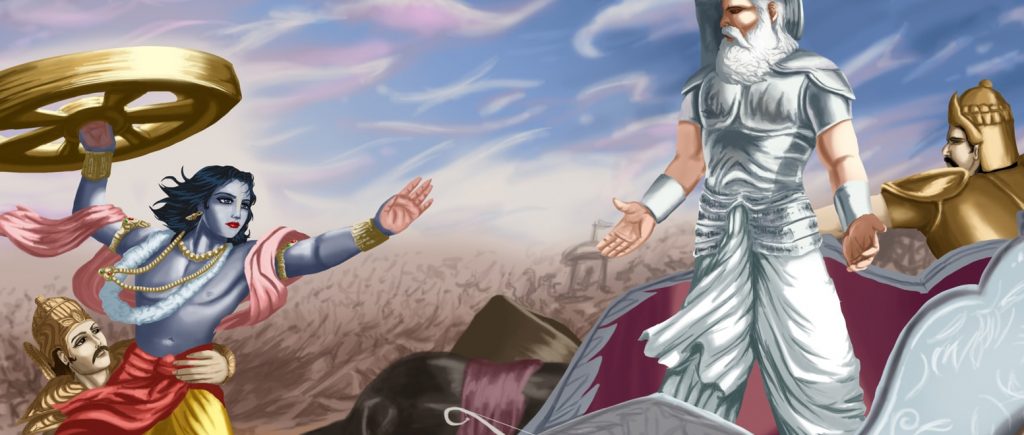
The main elements of a daily devotional practice include:
- Heart-centered prayer
- Kirtan or chanting meditation combined with active visualization
- Aarti-the offering of light – a brief ceremony that reaffirms the spirit of our devotional dedication
Karma Yoga – Dynamic Devotion
For the attainment of divine love, the Vedas state that there is only one rule and one prohibition that apply to bhakti yoga meditation. The rule is: “Always remember Radha Krishna.” The prohibition is, “Never forget Radha Krishna.”
This means that after our sitting meditation, our meditation should continue — while eating, sleeping, walking, working, talking, resting, and so on.
Wherever you are, all the time, whatever you are doing, remember your divine beloved and don’t forget Him! This simultaneous devotion and action is karma yoga. This state of devotional consciousness is cultivated over time with practice.
For example, in the old days street musicians with hand organs kept small monkeys. A monkey by nature is extremely active. How to make a monkey’s nature conform to sitting still, and that, too, in a confined space?

The musician’s technique was to first restrain the monkey with a 100-foot rope. If the monkey tried to go outside of this range, he was stopped. He thought, “Okay, I’ll jump around in a 100-foot area.”
When he was tied with a 50-foot rope he thought, “I went 100 feet yesterday, today I’m restricted to this much.” So he jumped around in a 50-foot area.
When the monkey was finally limited to only 1 foot of rope, he sat quietly, “Why should I drive myself crazy? I’ll just sit here.”
The human mind has this same monkey-like nature. It roams far and wide. Our goal is not to tame it’s active nature, but to train it to roam in a particular area. This is done by gently tying it with the devotional rope of love.
In sitting meditation we cultivate a feeling a devotional relationship with God. In active meditation we can continue this in three ways:
- Embed your intention — Every person has a mission that guides his life’s activities. For example, very few people like to work, but they do it because their mission is to support themselves or their family. While they are at work, although this motive is hidden deep in their mind, it still guides their decisions and actions.Similarly, when we firmly understand the purpose of our life is God-realization, this intention deeply embeds itself in the mind. If cultivated properly, this subconscious devotional intention remains in all our activities, even when we are sleeping.
- Feel divine presence — in sitting meditation we visualize and feel our relationship to God’s personal form. In activity, take hourly breaks for 30 seconds or a minute and with open eyes sense the presence of your worshipped form of God or Radha Krishna. Simply feel you are not alone. Imagine them near or far, sitting, standing or in any position, in any mood of love.
- Share your awareness — After visualizing God’s presence, either feel He is watching you or that you are showing Him what you are doing.
- Avoid wrong association — your associations and environment will affect your feeling of divine connection. Be mindful and avoid those situations that divert your devotional intention.
There is no restriction of time, place and activity for this remembrance. It can be done anywhere, at any time. You do not need to sit in a particular position or have closed eyes. This very simple practice will recall the blissful feelings of your seated meditation and help to stabilize your devotional experience.
Follow us on Facebook
Follow us on Twitter
Latest


Seven Vows and Steps (pheras) of Hindu Wedding explained
Views: 9,057 Indian marriages are well renowned around the world for all the rituals and events forming part of the...


Sari or Saree is symbol of Indian feminism and culture
Views: 7,320 One of the most sensual attires of a woman in India is undoubtedly the sari. It is a...


Atithi Devo Bhava meaning in Hinduism and India
Views: 7,070 Atithi Devo Bhava, an ancient line taken from the Hindu scriptures and was originally coined to depict a visiting person whose...


Sanskrit Is More Than Just A Method To Communicate
Views: 5,340 -By Ojaswita Krishnaa Chaturvedi anskrit is the language of ancient India, the earliest compilation of sound, syllables and...


Significance of Baisakhi / Vaisakhi
Views: 6,541 Baiskhi is also spelled ‘Vaisakhi’, and is a vibrant Festival considered to be an extremely important festival in...


Navaratri: The Nine Divine Nights of Maa Durga!
Views: 7,655 – Shri Gyan Rajhans Navratri or the nine holy days are auspicious days of the lunar calendar according...


History of Vastu Shastra
Views: 10,789 Vastu Shastra (or short just Vastu) is the Indian science of space and architecture and how we may...


Significance of Bilva Leaf – Why is it dear to Lord shiva?
Views: 10,474 – Arun Gopinath Hindus believe that the knowledge of medicinal plants is older than history itself, that it...


Concept of Time and Creation (‘Brahma Srishti’) in Padma Purana
Views: 10,734 Pulastya Maha Muni affirmed to Bhishma that Brahma was Narayana Himself and that in reality he was Eternal....


Karma Yoga – Yog Through Selfless Actions
Views: 9,642 Karma Yoga is Meditation in Action: “Karma” means action and “yoga” means loving unity of our mind with...

